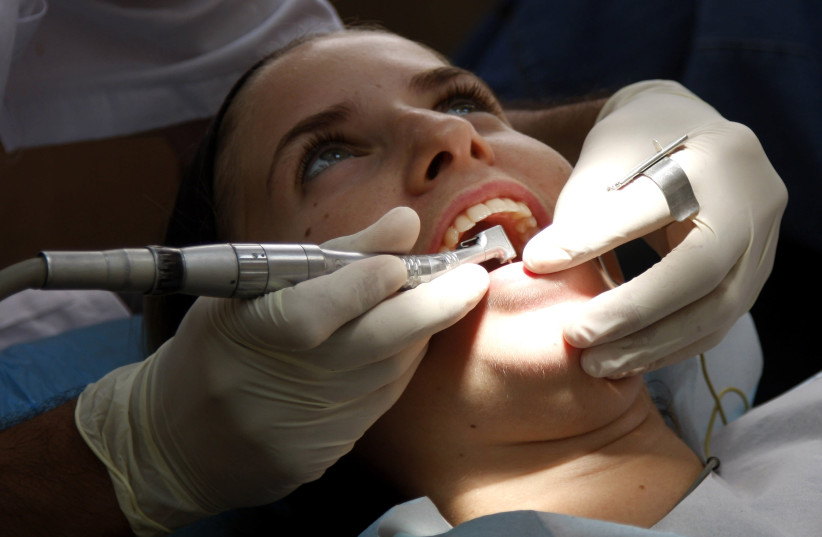As more and more people switch to an electric toothbrush to seemingly maximize oral hygiene, a senior dentist warns of the "silent killer" found in these toothbrushes. He claims that millions of people are putting their health at risk when brushing incorrectly and failing to change the heads of their brushes regularly.
A new UK study has revealed that nearly half (41%) of electric toothbrush users do not replace the heads of their brushes frequently enough, significantly lessening the advantages of the brushes. Of the 1,000 respondents who were surveyed, three percent admitted that they never change the head of their electric toothbrush.
The warnings regarding these electric brushes appear following several studies linking poor oral hygiene to Alzheimer's disease. Dentist Dr. Nigel Carter, chief executive of the Oral Health Foundation, revealed that "worn toothbrushes cannot clean your teeth properly and can damage your gums. When bristles are loose, they don't clean properly."
Importance of replacing electric toothbrush heads
In response to a survey by sustainable health brand SURI, around 30% of British respondents admitted that they could not even remember how long it had been since they changed their toothbrush head. To maximize oral health, experts suggest replacing the electric toothbrush heads at least every three months.
Improper cleaning of the teeth may cause the accumulation of bacterial plaque on teeth, which may lead to gingivitis, commonly known as "gum disease." Previous studies have shown that F. nucleatum, the bacteria known to cause gingivitis, may be involved in causing Alzheimer's.

Dentist and founder of "Green Dentistry," Dr. Davinder Raju, elaborated that "cleaning your teeth and gums is essential to maintaining your beautiful smile. Unfortunately, over time, frayed or worn toothbrush bristles become less effective at removing plaque and bacteria from the teeth and gums. Therefore, it is recommended to replace toothbrush heads every three months or sooner to ensure overall health."
Good, daily oral hygiene and plaque control should usually protect you from gum disease. However, you, unfortunately, become more susceptible as you get older. It is suggested to visit the dentist every six months for a check-up.
The dentist recommends brushing your teeth with fluoride-containing toothpaste at least twice a day, and to spit directly after brushing -- not to rinse your mouth with water. Beyond changing the toothbrush head (or entire toothbrush) every three months and contacting the dentist for regular appointments (especially for pregnant women or people with type-2 diabetes), he recommends that individuals quit smoking and use dental floss daily.
The correct way to use an electric toothbrush
To properly clean your teeth, you must brush for a full two minutes. Brush the front and back of your teeth, and make sure to pay proper attention to the teeth in the back of the mouth, which may be harder to reach. Unfortunately, most people do not brush for the full two minutes and often miss some teeth entirely. This is precisely when an electric toothbrush is beneficial.
A systematic review published in the Journal of Dentistry reviewed 29 different studies comparing the effectiveness of both manual and electric toothbrushes, finding that electric toothbrushes were significantly more effective in reducing both plaque buildup and gingivitis-spurring bacteria than manual toothbrushes.
When brushing your teeth, it is recommended to divide the mouth into four parts: the front parts of the teeth, the back parts of the teeth, the chewing surfaces and the back sides of the back teeth, and the tongue and roof of the mouth. When using an electric toothbrush there is no need to press hard or to rub. Instead, gently place the brush on each respective area as it spins. Some electric toothbrush models even include pressure sensors, which will let you know if you are pressing too hard. The electric toothbrush should brush about one tooth at a time, and you should make sure to really take the time to ensure a thorough brushing.
The proper steps for brushing your teeth
- Preparation is key! Before you begin brushing, make sure that your electric toothbrush is fully charged. Floss should be used prior to brushing as it helps loosen any plaque or food particles wedged between the teeth and makes it easier for the toothbrush to "sweep" them out.
- At the start of brushing, hold the brush at a 45-degree angle, just like with a manual toothbrush. Start from the outer surfaces of your teeth, and gently move the brush head slowly from tooth to tooth. Make sure to hold the brush head for a few seconds before continuing to the next tooth so that each tooth receives sufficient attention.
- After meticulously brushing the outer surfaces of your teeth, repeat your actions on the inner surfaces, and then proceed to cleaning the chewing surfaces of your teeth. Don't forget to brush behind your back teeth.
- After you have finished brushing, take a few seconds to move the brush head along the gums and the gum line. This will further aid in removing any remaining plaque. Be careful not to press too hard when brushing the gums, as they can be quite sensitive.
- Finally, use the brush to gently clean your tongue and the roof of your mouth. This will help in removing any lingering food particles and freshen your breath.
